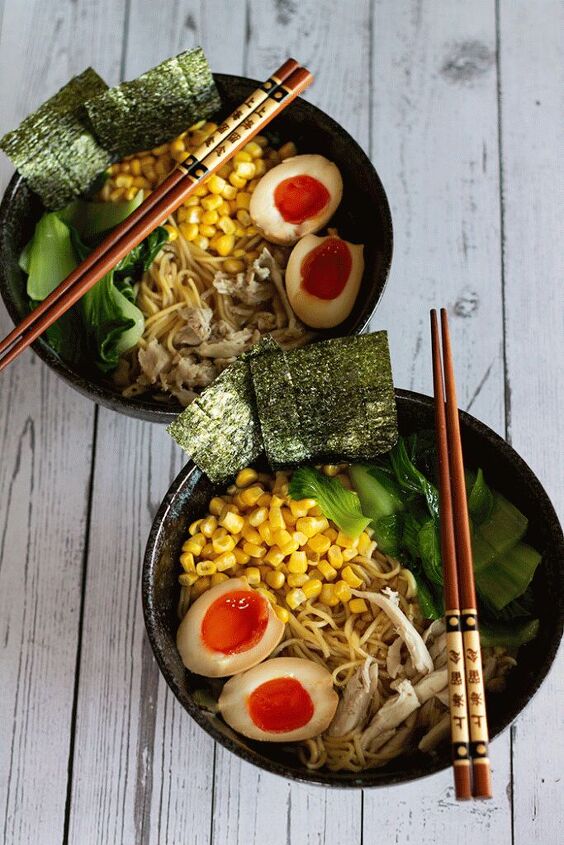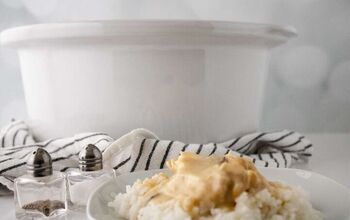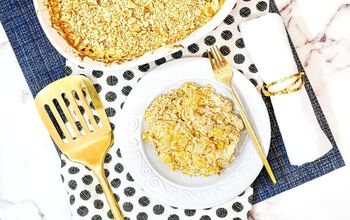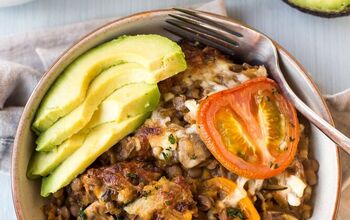Easy Weeknight Chicken Ramen Recipe

Do you want to eat a truly authentic bowl of Japanese ramen? Then sorry, my Easy Chicken Weeknight Ramen Recipe is probably not right for you. I suggest you find another recipe (and 4 or 5 hours of spare time) or visit your local ramen joint. However, if you're looking for a wholesome ramen bowl you can throw together on any day/night of the week that packs in a good dose of those traditional umami flavours, then I have exactly what you need.
Easy Weeknight Chicken Ramen was inspired by a ramen recipe in one of my Japanese cookbooks. The recipe is super authentic, but takes half a day to make. I enjoyed the hours I spent making it, but that time was not available to me very often. I really wanted to eat more ramen, but life was getting in the way of my favourite recipe, so I started to experiment and found a quicker solution.
It will take you around 40 minutes to get a couple of bowls of Easy Weeknight Chicken Ramen onto your table. It's really just a case of boiling a couple of eggs, cooking the noodles, chicken and veggies. The slightly salty umami broth takes a minute to prepare, you just add soy sauce, miso and finely chopped fresh ginger to some homemade or store-bought chicken stock and leave it to simmer for a bit. When you have all your ingredients in order all you need to do is add the noodles to your ramen bowls, pour on the broth and add the toppings - then that's it, dinner is ready for you to enjoy!
Eggs:
Soy sauce marinated eggs and normal soft boiled eggs are both good options, but please don't skip them (unless you really dislike eggs). Easy chicken ramen is not complete without a yummy soft boiled egg on the top - fact!
- Soy sauce marinated eggs add a further dimension of salty umami-ness to the ramen. They are pretty quick and simple to prep, but do need to be made ahead of time (ideally the night before). They really are worth a little extra time in my opinion so do check out my easy soy marinated eggs if you want to enjoy your ramen to the fullest.
- Non marinated soft boiled eggs - I'm not going to lie, they are not in the same league as soy-marinated eggs, but I feel that a bowl of ramen with a normal soft boiled egg is infinitely better than one with no egg. I often turn to this option when I run out of time to prep soy eggs and find they still complete the dish nicely.
Traditionally ramen is served with pork, but I go for chicken in my Easy Weeknight Ramen because it's healthy and easily available. I often use leftover roast chicken but if I don't have any on hand I boil up a leg and shred it with a fork. Thigh, breast and leg will also do nicely, but leg wins out for me because it's easily shreddable.
This dish is great for using up your leftover meat. Pork is a great alternative to chicken. You could also add beef or lamb if you have some leftover, but I don't recommend purchasing them for the purpose of making this soup because the broth isn't quite rich enough for them.
Make this ramen vegetarian by adding tofu instead of meat or add an additional egg.
You can use homemade or high-quality store-bought chicken stock but avoid using stock cubes. I make my own instant pot chicken stock every time we have a roast chicken. It's very simple and relatively quick.
Use dried or frozen ramen noodles, just make sure you read the cooking directions as these can vary depending on the type of ramen noodles you choose. No one wants soft overcooked noodles.
Ramen noodles are the most authentic option but they are not always the easiest noodle to get hold of. If you're struggling to find them udon or soba a good alternatives and egg noodles will also work.
I like to add a sizeable portion of veggies to every meal and ramen is no exception.
Try throwing in a couple of handfuls of wilted spinach or sautéed mushrooms if pak choi or sweetcorn don't float your boat (or are unavailable).
Otherwise, feel free to experiment - it's a great way to use up any vegetables that are lingering in your fridge.
Place the chicken leg into a pan of simmering salted water until cooked. This will take around 20 minutes. When it's ready, remove it from the pan and set it aside to cool before shredding all the meat from the bones with a fork.
2. Stock
Pour the chicken stock into a pan set to a low/medium heat and add miso paste, soy sauce and ginger.
3. Noodles
Cook your noodles according to pack instructions. When they're ready remove from the pan with tongs, place in a colander and run under cold water for a minute to prevent them from cooking further.
Boil the pak choi in the noodle water for a few minutes until softened. Remove from the pan and set aside.
Use the water from the noodles and pak choi to boil the corn or pop it in the microwave for two minutes.
- Noodles - add your noodles to the bowl first
- Broth - pour the hot broth over the top
- Toppings: Start with the chicken, then the veggies and add the egg last.
- Don't over cook the noodles - the exact hardness/softness of ramen noodles is a matter of personal taste, but nobody likes them super soft and over done. Noodle cooking times vary depending on the type of noodles you are using (e.g. frozen or dried). Make sure you read and follow the packet instructions and run them under cold water once cooked to prevent them from overcooking and sticking together.
- Don't reduce the broth - turn down the heat once the soy sauce and miso are combined with the chicken stock to ensure there is still a good volume of broth left
- Feel free to experiment - if you're not hung up on making the most authentic bowl of ramen (and let's face it, if you're making this recipe you are probably not) then I encourage you try different meat and veggie options. It's a great way to use up leftover meat or any veggies that are lingering in your fridge.
- Skip the chicken cooking stage by adding pre-cooked store-bought roasted chicken or use leftovers.
- Swap soy sauce and miso for a sachet of ramen seasoning. Add a little at a time and taste as you go to ensure the broth is not over-seasoned.
Ramen isn't the best candidate for leftovers or freezing so try to make the right amount and eat it all. Store any leftovers separately in airtight containers. Most components of Easy Chicken Ramen will keep in the fridge for up to 3 days.
- Speedy Prawn Pho Recipe
- Super Easy Spicy Chicken Noodle Soup
- Grilled Mackerel Rice Bowls With Soy & Mirin Sauce
- Kimchi Fried Rice With Chicken
Easy Weeknight Chicken Ramen Recipe
Recipe details
Ingredients
- 2 soy marinated ramen eggs or soft boiled eggs (note 1)
- 1 chicken leg (or 2 small portions of left over chicken)
- 600ml (or 2.5 cups) chicken stock
- 1.5 tbsp miso paste
- 1.5 tbsp soy sauce
- 2 tsp finely chopped ginger
- 2 portions of ramen noodles (normally around 200g or 7 ounces)
- 3 heads pak choi - leaves cut from stems and washed
- 164g (or 1 cup) sweetcorn - frozen or tinned is fine
Optional toppings:
- Nori sheets
- Chopped spring onions
Instructions
- If you are not using soy-marinated ramen eggs, pierce a tiny hole in the bottom of each egg and boil for 6 minutes. Once cooked run under cold water for a minute, place in a bowl of cold water and set aside.
- Place a saucepan of salted water on a medium heat. When the water starts to simmer add the chicken leg and cook for 15-20 minutes. When it is ready remove it from the pan with tongs and set it aside to cool. You can use the same water to boil the noodles and veggies. (note 2)
- While the chicken cooks prepare the broth. Pour the stock into another saucepan, add soy sauce, miso and ginger and place on a low heat and stir until combined.
- Cook the ramen noodles in the water you used to boil the chicken according to packet instructions.
- Remove the noodles with the tongs when they're ready, place them in a colander and run under cold water and set aside (note 3)
- Add the pak choi to the simmering water you have used to cook the chicken and noodles and cook for a few minutes until slightly soft. Remove from the pan with tongs and set aside. (note 4)
- Cook the sweetcorn in the same water as the pak choi for a couple of minutes and set aside or microwave if you prefer
- Shred the chicken meat off the bone with a fork.
- Chop your soy-marinated ramen eggs in half vertically. If you have opted for non-marinated eggs peel the shells off and slice in half vertically. (note 5)
- Assemble the ramen by adding the noodles to the bowls first and then pouring on the broth.
- Top with chicken first, followed by pak choi and sweet corn.
- Add the egg last followed by the nori sheets and spring onions if using
Tips
- Prepare the soy marinated ramen eggs the night before. Alternatively, you can skip the marinading and include normal soft boiled eggs instead.
- Check the chicken is cooked by cutting into it to ensure the meat is white all the way through or use a meat thermometer to check the chicken has reached 75 degrees Celsius or 165 degrees Fahrenheit.
- The time it takes to cook the ramen noodles varies depending on the type of noodles you are using e.g. dried or frozen, however, they often cook in under 5 minutes. Running them under cold water after cooking prevents them from sticking together and stops them from cooking further and becoming too soft.
- Pak choi is ready when it has softened a little lost its crunch, but be careful not to overcook it
- Tap the bottom of the eggs gently on the countertop to break the shells and gently peel from the bottom































Comments
Share your thoughts, or ask a question!